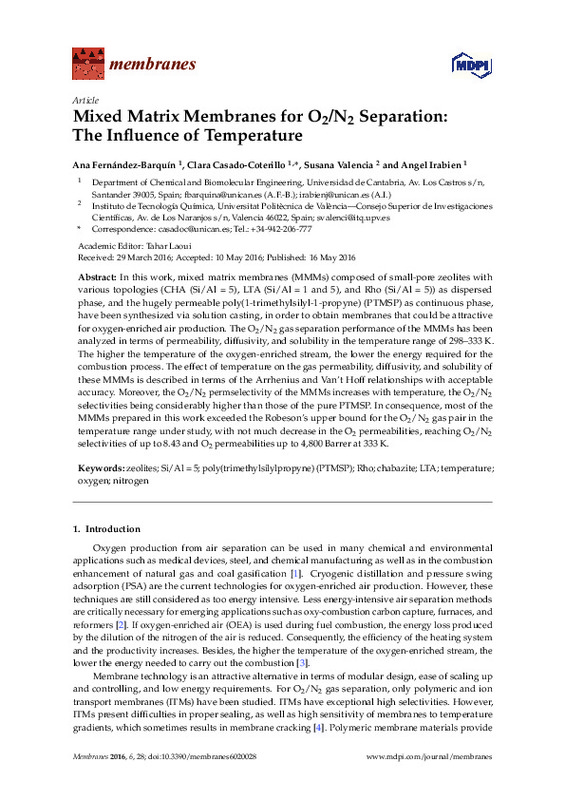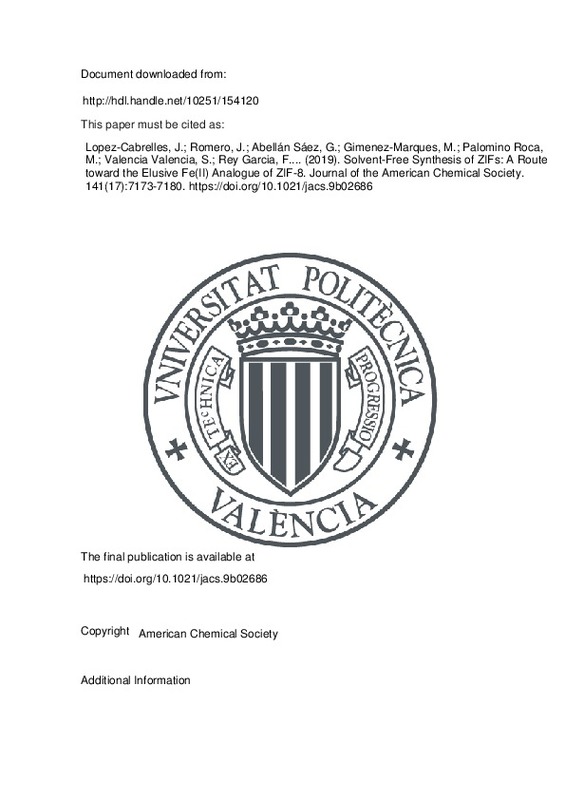JavaScript is disabled for your browser. Some features of this site may not work without it.
Buscar en RiuNet
Listar
Mi cuenta
Estadísticas
Ayuda RiuNet
Admin. UPV
Selective room-temperature transformation of methane to C1 Oxygenates by deep UV Photolysis over zeolites
Mostrar el registro sencillo del ítem
Ficheros en el ítem
| dc.contributor.author | Sastre Calabuig, Francesc
|
es_ES |
| dc.contributor.author | Fornes Seguí, Vicente
|
es_ES |
| dc.contributor.author | Corma Canós, Avelino
|
es_ES |
| dc.contributor.author | García Gómez, Hermenegildo
|
es_ES |
| dc.date.accessioned | 2013-05-08T10:34:14Z | |
| dc.date.issued | 2011-11 | |
| dc.identifier.issn | 0002-7863 | |
| dc.identifier.uri | http://hdl.handle.net/10251/28670 | |
| dc.description.abstract | [EN] Methane can directly be transformed into liquid C 1 oxygenated products with selectivities above 95% at 13% conversion by deep UV photocatalysis, in the presence of H 2O and air. Pure silica zeolites, and more specifically, beta zeolite with a large number of internal silanol groups is active and selective, while amorphous silica with no micropores is much less efficient. Irradiation produces the homolytic cleavage of surface hydroxyl groups, leading to silyloxyl radicals that will generate methyl radicals from methane. The selectivity arises from the occurrence of the reaction in a confined space restricting the mobility of the radical intermediates that will be mostly attached to the solid surface. Energy consumption of the process is in the order of 7.2 Gcal ¿ mol -1 that compares very favorably with the energy required for transforming methane to synthesis gas (15.96 Gcal ¿ mol -1). © 2011 American Chemical Society. | es_ES |
| dc.description.sponsorship | Financial support by the Spanish Ministry of Science and Innovation (MICINN Grants CTQ-2009-0585 and CONSOLIDER INGENIO MULTICAT) is gratefully acknowledged. | en_EN |
| dc.language | Inglés | es_ES |
| dc.publisher | American Chemical Society | es_ES |
| dc.relation.ispartof | Journal of the American Chemical Society | es_ES |
| dc.rights | Reserva de todos los derechos | es_ES |
| dc.subject | Amorphous silica | es_ES |
| dc.subject | Beta zeolite | es_ES |
| dc.subject | Confined space | es_ES |
| dc.subject | Deep uv | es_ES |
| dc.subject | Homolytic cleavage | es_ES |
| dc.subject | Methyl radical | es_ES |
| dc.subject | Micropores | es_ES |
| dc.subject | Oxygenated products | es_ES |
| dc.subject | Pure silica zeolites | es_ES |
| dc.subject | Room temperature | es_ES |
| dc.subject | Silanol groups | es_ES |
| dc.subject | Solid surface | es_ES |
| dc.subject | Surface hydroxyl groups | es_ES |
| dc.subject | Carbon monoxide | es_ES |
| dc.subject | Energy utilization | es_ES |
| dc.subject | Methane | es_ES |
| dc.subject | Photocatalysis | es_ES |
| dc.subject | Photolysis | es_ES |
| dc.subject | Reaction intermediates | es_ES |
| dc.subject | Silica | es_ES |
| dc.subject | Silicate minerals | es_ES |
| dc.subject | Synthesis (chemical) | es_ES |
| dc.subject | Synthesis gas | es_ES |
| dc.subject | Zeolites | es_ES |
| dc.subject | Liquid methane | es_ES |
| dc.subject | C1 oxygenate | es_ES |
| dc.subject | Oxygen derivative | es_ES |
| dc.subject | Silanol | es_ES |
| dc.subject | Silicate | es_ES |
| dc.subject | Unclassified drug | es_ES |
| dc.subject | Zeolite | es_ES |
| dc.subject | Article | es_ES |
| dc.subject | Energy consumption | es_ES |
| dc.subject | Micropore filter | es_ES |
| dc.subject | Oxygenation | es_ES |
| dc.subject | Ultraviolet radiation | es_ES |
| dc.subject | Oxygen | es_ES |
| dc.subject | Temperature | es_ES |
| dc.subject | Ultraviolet Rays | es_ES |
| dc.subject.classification | QUIMICA ORGANICA | es_ES |
| dc.title | Selective room-temperature transformation of methane to C1 Oxygenates by deep UV Photolysis over zeolites | es_ES |
| dc.type | Artículo | es_ES |
| dc.embargo.lift | 10000-01-01 | |
| dc.embargo.terms | forever | es_ES |
| dc.identifier.doi | 10.1021/ja204559z | |
| dc.relation.projectID | info:eu-repo/grantAgreement/MICINN//CTQ-2009-0585 | es_ES |
| dc.rights.accessRights | Cerrado | es_ES |
| dc.contributor.affiliation | Universitat Politècnica de València. Departamento de Química - Departament de Química | es_ES |
| dc.description.bibliographicCitation | Sastre Calabuig, F.; Fornes Seguí, V.; Corma Canós, A.; García Gómez, H. (2011). Selective room-temperature transformation of methane to C1 Oxygenates by deep UV Photolysis over zeolites. Journal of the American Chemical Society. 133(43):17257-17261. doi:10.1021/ja204559z | es_ES |
| dc.description.accrualMethod | S | es_ES |
| dc.relation.publisherversion | http://doi.org/10.1021/ja204559z | es_ES |
| dc.description.upvformatpinicio | 17257 | es_ES |
| dc.description.upvformatpfin | 17261 | es_ES |
| dc.type.version | info:eu-repo/semantics/publishedVersion | es_ES |
| dc.description.volume | 133 | es_ES |
| dc.description.issue | 43 | es_ES |
| dc.relation.senia | 209441 | |
| dc.identifier.pmid | 21939273 | |
| dc.contributor.funder | Ministerio de Ciencia e Innovación |






![[Cerrado]](/themes/UPV/images/candado.png)




